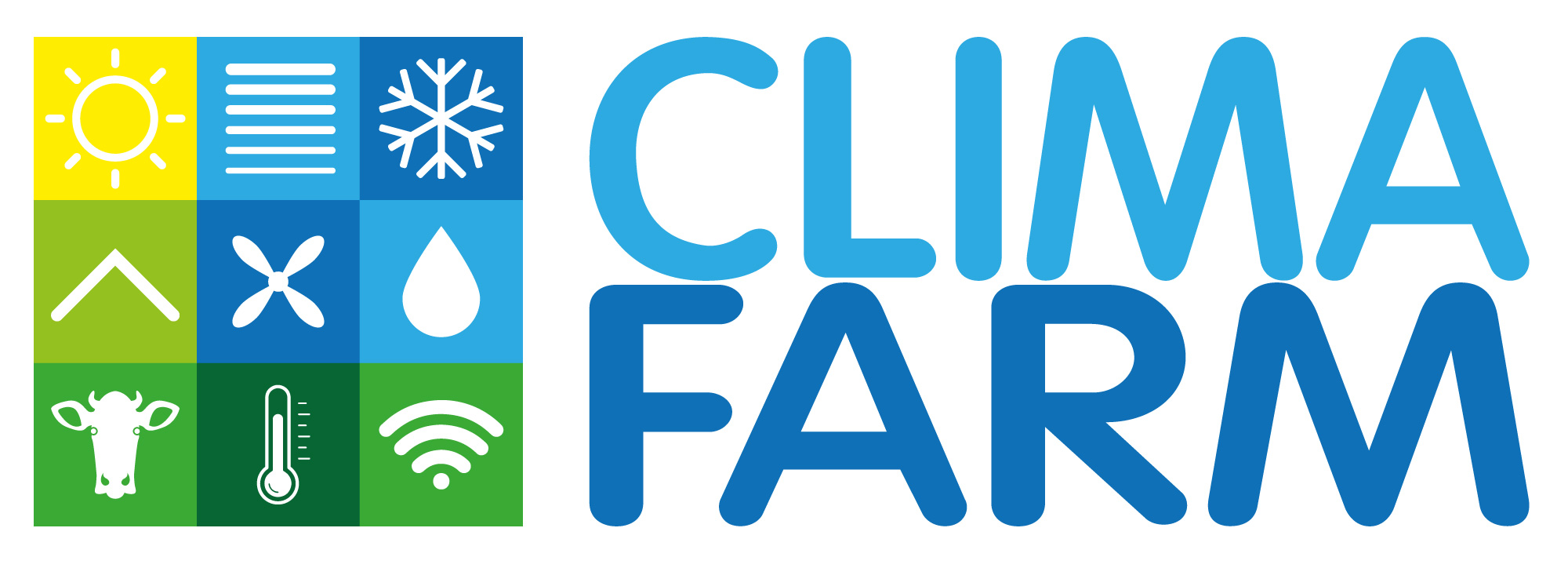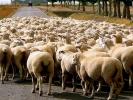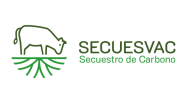
CLIMAFARM Operational Group: Prototype of a sustainable air conditioning system for dairy production
- Type Operational group
- Status In progress
- Execution 2023 -2025
- Assigned Budget 299.276,88 €
- Scope Autonómico
- Autonomous community Andalucía
- Project website GO CLIMAFARM
Pt. 1. Detailed Study of the State of the Art. Improvement of thermal comfort in cattle: The implementation of the air conditioning system will help control environmental conditions (temperature and relative humidity) and ventilation in the barn, thus reducing heat stress in cows, thus providing a comfortable state for them. Increased milk production: By reducing heat stress in cows through a controlled environment, an increase in milk production is likely to be observed, since the cows will be in a more comfortable environment. Reduction in energy consumption: Energy consumption is expected to be reduced with the implementation of the air conditioning system compared to traditional systems. Reduction of pollutant emissions: The implementation of the air conditioning system in the barn will serve to reduce emissions of polluting gases such as ammonia (NH3) and carbon dioxide (CO2), thus achieving acceptable indoor air quality.
ACTION Pt.2. Plan and Develop Data Acquisition. Requirements Analysis. Study of environmental variables that influence dairy production: The variables that most influence animal comfort and therefore milk production have been detailed, and their control can be emphasized. Study for the ideal conditioning of livestock: With the use of monitoring collars, it has been possible to assess the well-being of the animals and the most suitable methodology to guarantee it. Analysis of thermal loads and pressure losses due to enclosures: It has been verified that the enclosures maintain a more controlled environment, but it is difficult to close them completely without compromising air quality.
ACTION Pt. 3. Integration of Information into a Database Efficient Data Access: By centralizing information, different teams can access data quickly and easily, facilitating joint analysis of environmental conditions and milk production. Real-Time Analysis: Implementing a real-time access system allows for proactive adjustment of HVAC conditions, optimizing livestock thermal comfort and improving their productivity. Continuous Monitoring: Integrating information into a relational database allows for continuous monitoring and storage of historical data, facilitating long-term evaluation of the HVAC system's impact.
ACTION Pt. 4. Prototype Design Thermal Comfort Optimization: The prototype has proven capable of maintaining stable and optimal environmental conditions for the thermal comfort of livestock. Air Quality Improvement: The incorporation of the air recovery module has significantly improved the air quality in the barn, efficiently removing contaminated air and ensuring a healthier environment. Energy Efficiency: Thanks to the implemented improvements, the prototype has demonstrated a reduction in energy consumption, which contributes to the long-term sustainability of the project. Adaptation to the Barn: The system has been successfully adapted to the structural and operational conditions of the livestock barn, ensuring its technical and economic viability.
ACTION Pt. 5. Manufacturing and validation of the prototype Optimal System Operation: The prototype has proven capable of maintaining ideal environmental conditions for the thermal comfort of cattle, ensuring a stable temperature, an adequate level of humidity and optimal air quality. Increased Energy Efficiency: Thanks to the improvements implemented in the air recovery module and in the automated control systems, the prototype has achieved high levels of energy efficiency, significantly reducing the installation's electrical consumption. Improved Milk Production: Maintaining a comfortable environment for dairy cows is expected to translate into an increase in milk production, as well as an overall improvement in the health and well-being of the cattle. Validation in a Real Environment: The system has been successfully validated under real operating conditions, demonstrating its technical and economic viability for future implementation in other livestock farms.
ACTION Pt. 6. Reports Provide an overview of project results and achievements. Partial drafting of final technical reports detailing the progress, results, and conclusions of each project action.
ACTION Pt. 7. Communication and Dissemination Website with 750 visits: The project website has been created. However, given the short time it has been available, the visits have not yet been counted. 2 Press releases: The initial press release for the project has begun, with the intention of publishing it in late August / early September. Publication in 4 specialized magazines: Publication in specialized magazines will be carried out at the same time as the press release. Social networks with 750 visits: The project's LinkedIn and Facebook profiles have been created. However, as with the website, the visits have not yet been counted given the short time they have been operational. 2 Videos: Recordings have been made, and the initial video presentation of the project has begun. 300 Brochures: A project brochure has been designed and is currently under review by the partners.
- Project management and coordination.
- Detailed study of the state of the art Planning and developing data acquisition.
- Requirements analysis.
- Integration of information into a database.
- Analysis of thermal loads and pressure drops.
- Prototype design.
- Manufacturing and validation of the prototype.
- Field trials.
- Information.
The project arose in response to the need to improve the productivity and well-being of cattle in the face of adverse environmental conditions, such as heat stress, which negatively affect milk production. This problem, resulting from the deviation of temperature and humidity from optimal levels, impacts not only the profitability of livestock farms but also the sustainability of the sector.
Furthermore, the growing concern for energy efficiency and the sustainable use of water and energy resources is driving the development of innovative technological solutions. At the legislative level, the project is aligned with European and national policies that foster innovation in the agri-food and livestock sectors, such as the Common Agricultural Policy (CAP) and the Andalusian Rural Development Program 2014-2020, which promote the adoption of sustainable technologies to improve productivity and the use of natural resources.
The main objective of this project is to develop a sustainable air conditioning system that improves thermal conditions and air quality in livestock facilities, optimizing resources and reducing heat stress in livestock, thereby improving their production. It also seeks to extract and analyze data from multiple sources to generate knowledge that cannot be obtained through conventional analysis.
- Coordinator/entity name: Keyter Technologies
- Postal address: Pi Los Santos C/José Estrada Orellana 2
- Coordinator/entity email: idi@keyter.es
- Telephone: 957510752
In compliance with current regulations, a detailed justification of the activities carried out during the first half of the project is presented. The deliverables produced according to the planned schedule are also attached.
- KEYTER TECHNOLOGIES S.L
- KEYTER TECHNOLOGIES S.L (idi@keyter.es)
- COVAP (rherrerag@covap.es)
- CETEMET (j.rodero@cetemet.es)
- UCO (manuel.ruiz@uco.es)
- COOPERATIVAS-AGROALIMENTARIAS (rgonzalez@agroalimentarias-andalucia.coop)
- KEYTER TECHNOLOGIES S.L





